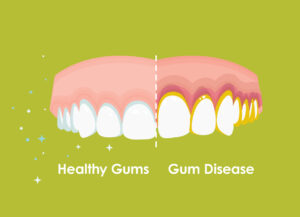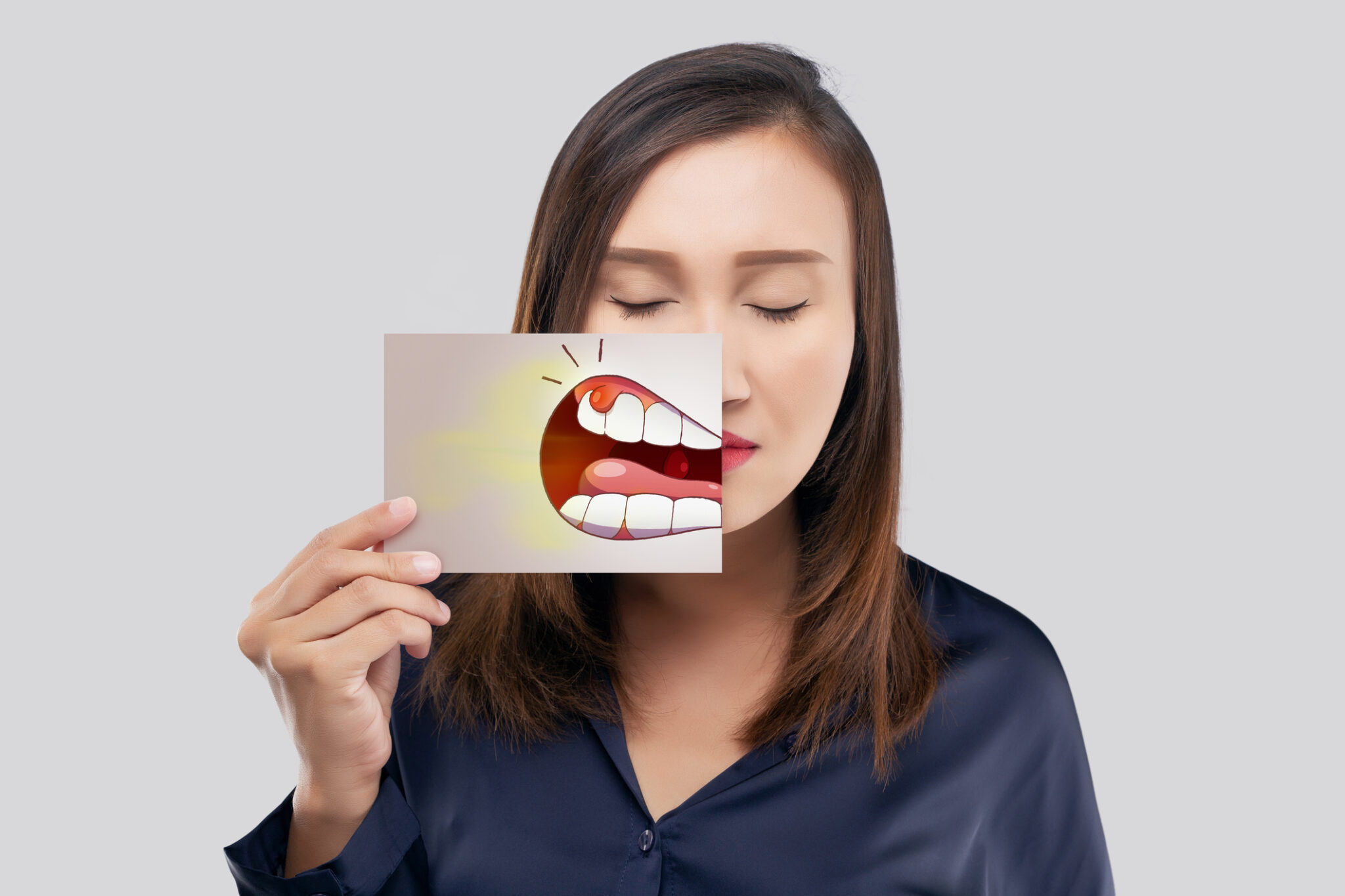Did you know the National Institutes of Health estimates there are about 700 species of microorganisms, including bacteria, that live on our teeth, tongues, and gums? Some of these microbes are actually helpful in supporting the production of saliva and protects against cavities!
However, when bacteria settle in around your teeth and gums it could lead to gum disease. Let’s explore what this is and how you can prevent it.
Where does gum disease start?
Also known as periodontal disease, gum disease starts with bacterial growth and inflammation along the gum line. This is caused by an excess amount of plaque – a sticky, invisible film on the teeth.
The first stage of gum disease is called gingivitis. With early diagnosis, removal of any plaque buildup, and an evaluation of your oral hygiene routine, it is often easily reversible!
Periodontitis, the more serious stage of periodontal disease, occurs with ongoing gum inflammation and the hardening of plaque into tartar. If this condition continues, the gums separate from the teeth and form pockets. These can become infected and cause tooth decay, loss of teeth, and destroy the gum tissue and bone.
Other health conditions have also been linked to gum disease. These include heart attacks, strokes, diabetes, and Alzheimer’s as well as smoking and tobacco use.
What does gum disease look like?
Healthy gums should be firm and snug around your teeth. If you examine your gums and/or note any of the following signs of periodontal disease, we encourage you to reach out to your dental provider.
- Bad taste in mouth
- Persistent bad breath
- Tender/swollen/bleeding gums
- Loose teeth
- Receding gums
- Changes in the way partial dentures fit

Healthy Gums vs. Gum Disease
How do you treat gum disease?
In addition to seeing your dentist regularly, practicing good oral hygiene habits are a great way to prevent periodontal disease.
- Brush twice a day
- Floss daily
- Rinse with mouthwash
- Eat a balanced diet, especially foods rich in Vitamin C
If periodontal disease or gingivitis is diagnosed by your dentist, a professional dental cleaning paired with good home oral care can treat it. Advanced Hygiene Therapy (gum disease therapy) is also utilized to remove buildup from hard-to-reach spots and reduce gum inflammation.
While common, periodontal disease is preventable. Talk with your dentist about reducing your chance of developing gum disease with successful treatment.

